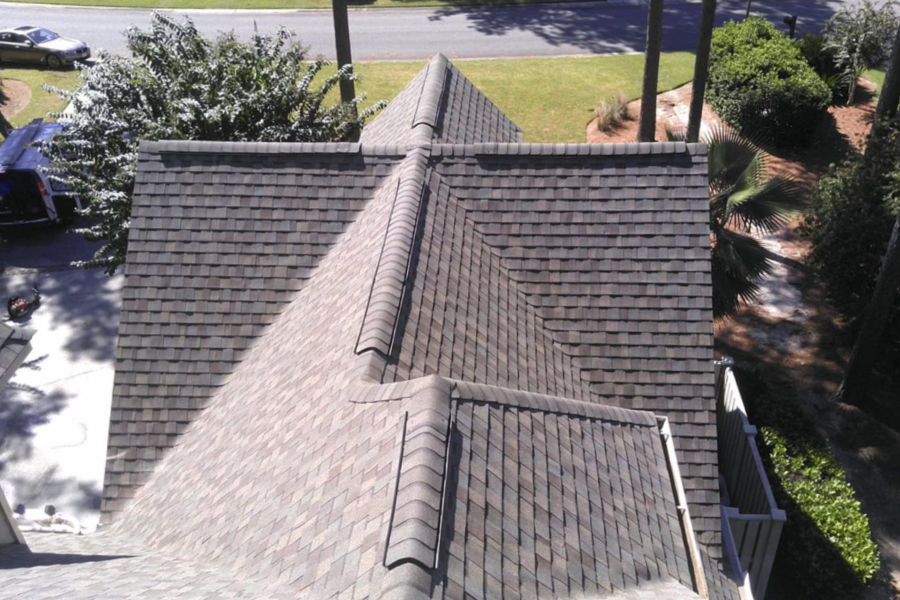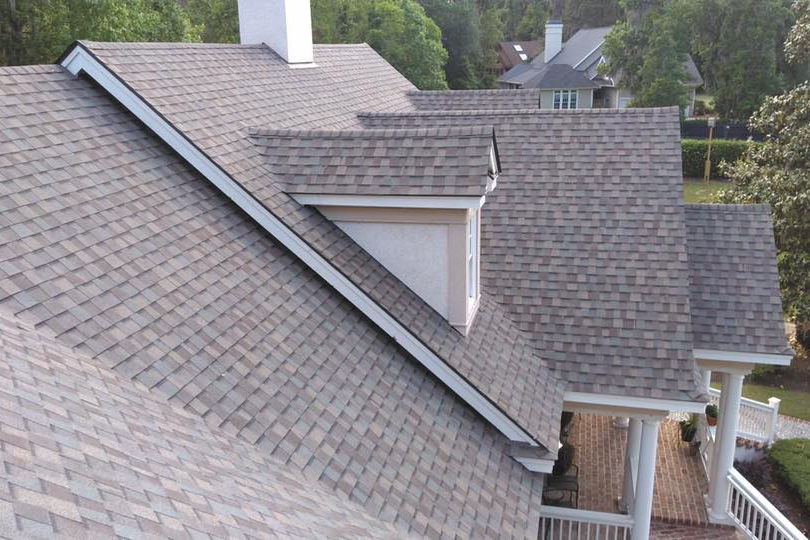Does Your Roof Impact Your Energy Bill?
Yes, your roof greatly impacts your energy bill. Its material, color, insulation, and maintenance all play significant roles when it comes to energy efficiency. For instance, light-colored roofs reflect heat, reducing cooling costs, while proper insulation helps maintain a comfortable interior temperature. Regular upkeep can also identify potential issues early, helping you save on costly repairs down the line. An energy-efficient roof isn’t just about saving money, though; it’s also about a more sustainable living situation. If you’re keen on further exploring your roof’s potential for energy savings, there’s plenty more to uncover.
Understanding Energy Efficiency
Understanding the concept of energy efficiency is significant when considering how your home’s roof can greatly impact your energy bills. The energy ratings of your roof can be a game-changer in this scenario. Here’s why: A roof with a high energy rating is designed to reduce heat absorption, subsequently decreasing your reliance on air conditioning and reducing energy consumption.
Now, you might be thinking, ‘how can I increase my roof’s energy rating?’ The answer lies in cool roofs. These specially designed roofs reflect more sunlight and absorb less heat than a standard roof, leading to much lower energy bills. So, it’s a win-win situation – you save money and also reduce your environmental impact.
Energy saving tips aren’t just about changing your habits, they also involve making smart choices about your home’s infrastructure. When you opt for a cool roof, you’re not just serving your own interests, but also playing an essential role in combating climate change. It’s a small change with a big impact. Consequently, understanding energy ratings and the concept of cool roofs is a significant step towards a more energy-efficient home.

The Role of Your Roof
Diving deeper into the subject, it’s essential to comprehend how exactly your roof plays a pivotal role in your home’s energy efficiency. Your roof design and material both impact your energy savings to a great extent. Here’s how: during the summer, your roof absorbs heat from the sun, and if your roof material is not designed to reflect heat, it could be contributing significantly to your cooling costs.
On the other hand, in the winter, a well-insulated and designed roof can help retain heat, reducing your heating costs. The heat absorption and release capacity of your roof material directly affect your energy bills, making your roof a key player in your home’s energy efficiency.
Material: A Key Factor
Now, let’s take a closer look at how the choice of roofing material impacts your home’s energy efficiency. The type of roof material you choose can make a significant difference in your energy savings. For instance, metal roofs are highly reflective and can reduce cooling costs in the summer, while slate or tile can provide excellent insulation during the winter months.
Your roof material’s weather resistance is another factor to take into account. Some materials, like asphalt shingles, can withstand harsh climates, reducing the need for frequent repairs and thereby, saving energy and costs in the long run.
The cost comparison between different roof materials can be deceiving. While some energy-efficient materials may have a higher upfront cost, they often result in lower energy bills over time. You’ll want to balance the initial cost with the expected lifespan and energy savings of the material.
Lastly, take into consideration the environmental impact of your roof material. Some materials are more sustainable than others, contributing to a smaller carbon footprint. For instance, recycled metal roofing or shingles made from recycled materials can be a greener choice. Remember, when it comes to energy efficiency, your roof material matters.
Impact of Roof Color
Believe it or not, the color of your roof plays a crucial role in your home’s energy efficiency. Roof colors, specifically dark versus light, have a profound effect on sunlight absorption and heat retention. Dark colors, such as black and brown, absorb more sunlight and retain heat longer than lighter colors like white and grey.
This absorption and retention contribute significantly to your home’s climate control. A dark roof can make your home much hotter in the summer, leading to increased cooling costs as your air conditioning works overtime. On the bright side, it can also make your home warmer in winter, potentially lowering your heating costs.
On the other hand, a lighter roof reflects sunlight, helping to keep your home cooler. This can result in considerable energy savings during hot summer months when your air conditioning doesn’t have to work as hard. However, it might mean a colder home in the winter unless you invest in sufficient insulation.
In essence, choosing the right roof color can be a balancing act between your desire for energy savings and your need for effective climate control. It’s a decision that should be taken seriously, as it could impact your energy bill for years to come.
Insulation and Energy Consumption
Your home’s insulation doesn’t just keep you warm in winter; it’s a crucial player in your overall energy consumption, playing a significant role in your heating and cooling costs. More than just a barrier, it’s a shield, providing weather protection against extreme temperatures and consequential energy overuse.
Insulation benefits are numerous, and understanding them can help you make informed decisions. When your home has proper insulation, it retains heat during cold months, reducing the need for excessive heating. Similarly, during hot months, insulation helps maintain a cool home, thereby reducing cooling costs.
Energy savings are the most concrete advantage of good insulation. By controlling the transfer of heat, insulation ensures that your heating or cooling system doesn’t overwork, leading to significant energy savings. This not only reduces your energy bill but also contributes to a more sustainable living environment.
Essentially, good insulation acts as a thermostat for your house, maintaining a comfortable temperature regardless of the weather outside. It’s not just about comfort, but also about responsibility. By investing in proper insulation, you’re serving not only your family’s comfort but also contributing to broader energy efficiency efforts.

The Importance of Ventilation
While insulation plays a vital role in controlling your home’s temperature, it’s the ventilation system that ensures this climate control is efficient and effective. Let’s dig deeper into this often overlooked aspect of your home’s energy efficiency and reveal the ventilation benefits that can lead to significant energy savings.
Proper ventilation creates a continuous supply of fresh air, enabling heat control and preventing the accumulation of excessive warmth in your living spaces. It helps balance the temperature between the roof and the attic, reducing the strain on your air conditioning system. This air circulation not only makes your home more comfortable but also reduces energy consumption, thereby easing the pressure on your wallet.
In addition to heat control, a well-ventilated roof plays a vital role in preventing condensation. Without adequate ventilation, your home could succumb to dampness, mold, and wood rot. These issues can result in costly repairs and can even jeopardize your family’s health.
In essence, a well-designed and maintained ventilation system can make a world of difference when it comes to energy efficiency and the overall comfort of your home. It’s an investment that truly serves you in the long run.
Solar Reflectance Index Explained
Now, let’s delve into the concept of the Solar Reflectance Index (SRI), a significant factor that can greatly impact your home’s energy efficiency. The SRI measures your rooftop’s ability to reject solar heat. It’s a pivotal element when considering the installation of rooftop solar systems.
A high SRI means your roof reflects most of the sun’s rays, reducing heat absorption. This characteristic is a hallmark of cool roofs, which can lower the temperature of your home, providing substantial energy savings. A high SRI is advantageous, especially in hot climates, where air conditioning is used extensively for climate control.
Conversely, a low SRI implies that your roof absorbs more heat, reducing the effectiveness of your rooftop solar system and increasing your energy costs. It’s worth noting that cool roofs with high SRIs can ease heat islands in urban areas, contributing to the greater good.
In essence, understanding and maximizing your roof’s SRI could lead to significant energy savings and more efficient climate control. It’s a win-win situation, benefiting not only you but also the environment and the community around you. By harnessing the power of the sun, you’re actively participating in creating a sustainable future.
Roof Maintenance Tips
Maintaining your roof, an often overlooked aspect of home upkeep, can greatly enhance your home’s energy efficiency and prolong the lifespan of your roofing materials. Seasonal maintenance is an important step in this process. In the spring and fall, prioritize gutter cleaning to prevent water damage and ice dams that can impair your roof’s ability to insulate your home.
Routine roof inspections are another key strategy. An annual inspection can identify potential issues before they become costly repairs. Look for cracked, loose, or missing shingles that can compromise your roof’s integrity and your home’s energy efficiency.
Consider incorporating weatherproofing techniques into your maintenance routine. Applying a protective sealant can help your roof withstand harsh weather conditions and improve its overall insulation capabilities. This measure, in conjunction with leak prevention strategies, can notably reduce your energy bills. Regularly check for signs of leaks, such as water stains on your ceilings or walls. Early detection can prevent extensive damage and maintain your roof’s effectiveness in conserving energy.

